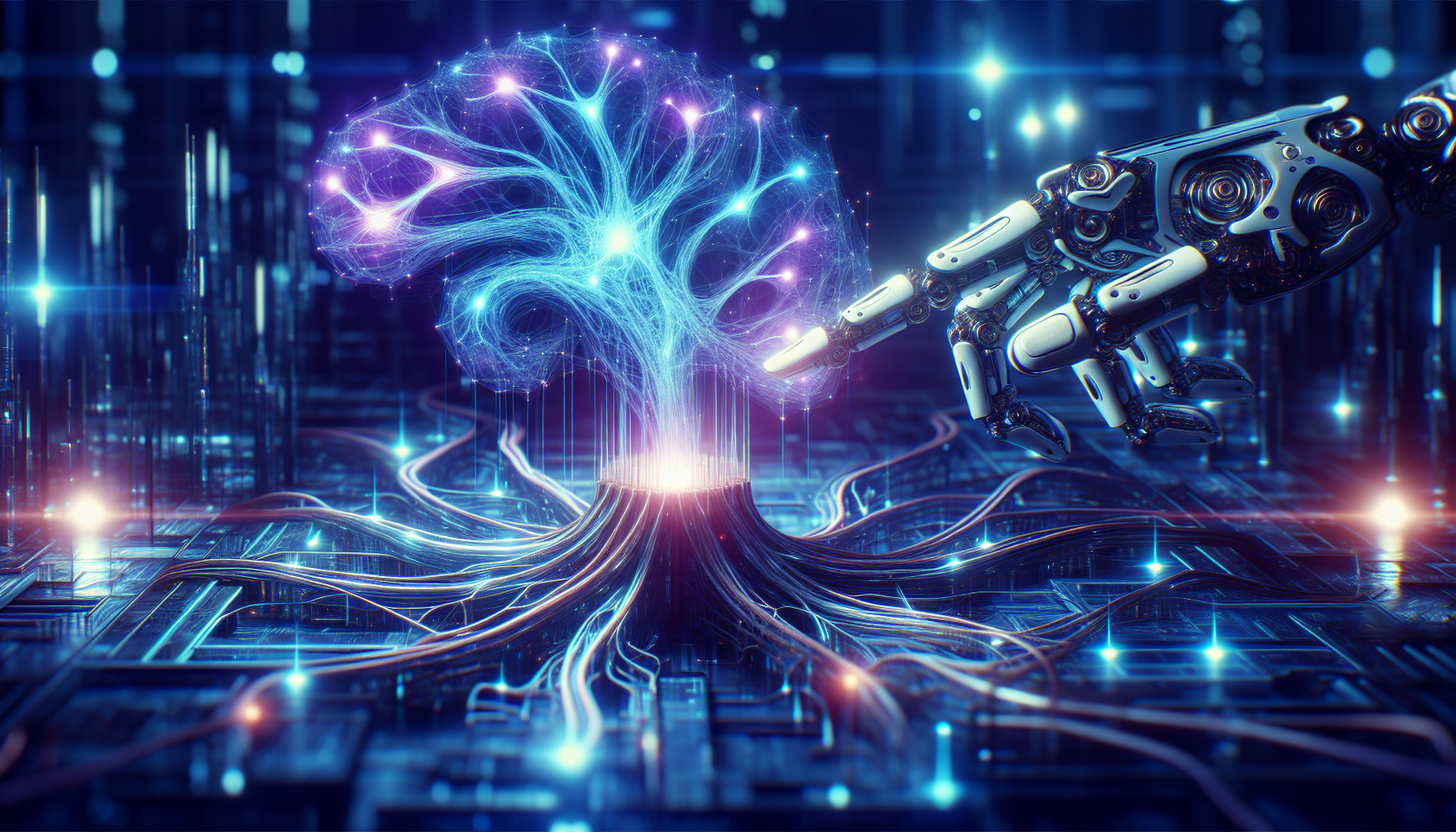The emergence of synthetic neurons raises fascinating questions about the future of smart robotics. These artificial cells, capable of mimicking human neural processes, open unexplored perspectives. _The integration of electronic perception systems significantly enhances the performance of current machines._
Research in neuroscience and electronics is converging, creating promising synergies. _The rise of these technologies could radically transform our interaction with robots._ Thanks to advancements in integrated circuit neurons, it becomes conceivable to endow machines with unprecedented sensitivity and adaptability.
Innovative synthetic neurons
Recent research highlights the capability of synthetic neurons to imitate human processes, a notable advancement in the field of robotics. This discovery is the result of a collaboration between Northwestern University and Georgia Tech, which designed a high-performance organic electrochemical neuron (OECN). This OECN operates over a frequency range comparable to that of human neurons, making smoother interaction with robotic systems possible.
Reconstructed perception systems
Research has also enabled the construction of a complete perception system by integrating artificial tactile receptors and synapses. These components allow robots to perform detection and processing of tactile signals in real-time. For the team, this represents a significant advancement in creating robots capable of reacting more intuitively to stimuli from their environment.
As mentioned by Yao Yao, one of the lead authors, the goal was to reduce the size of the artificial neuron while preserving its exceptional neural characteristics. Such a reduction in size could facilitate the integration of these neurons into large-scale electronic devices.
Comparison with existing systems
Tobin J. Marks, chemist and co-author of the study, noted that traditional artificial neural circuits operate within quite limited frequency ranges. The synthetic neuron developed, in contrast, has an unmatched frequency modulation capability, reaching a range up to fifty times wider than that of current organic electrochemical circuits. The efficiency of this system could transform the way robots interpret tactile signals.
A step forward for smart robotics
The ability of artificial neurons to transform tactile stimuli into spatiotemporal neural signals highlights the potential of artificial intelligence in robotics. Robots equipped with such capabilities will ultimately be able to simulate human interactions and adapt to various environments, thereby increasing their efficiency in areas such as medical assistance or rescue missions.
Researchers envision even more compact future models, while continuing to enhance the processing power of robotic systems. This direction opens new perspectives for the development of assistance systems based on s synthetic neurons, positioning research at the heart of technological advancements in smart robotics.
Practical applications and upcoming innovations
The implications of this research could be vast, encompassing fields ranging from rehabilitation to human-machine communication. Future biocomputers, made up of artificial neurons, promise a significant reduction in energy consumption compared to current digital systems. This new approach could potentially transcend the current limitations of processors and traditional electronic circuits.
Spectacular achievements are already emerging from this integration. For instance, computer vision systems are being revolutionized thanks to bio-inspired neural networks, allowing for object detection in low-light conditions. These advancements underscore the increasing interconnection between biology and technology, thus paving the way for revolutionary innovations in robotics.
A promising future
As the capabilities of synthetic neurons improve, the prospects for their integration into advanced robotic systems become clearer. Research on these neurons, which emulate human brain function, signals a fundamental turning point towards more autonomous and adaptable machines. The limits of current robotics could be pushed back, establishing new standards for tomorrow’s technology.
Frequently asked questions about synthetic neurons and smart robotics
What is a synthetic neuron, and how does it work?
A synthetic neuron is an artificial device designed to imitate the functioning of biological neurons, particularly regarding the transmission of electrical signals in response to environmental stimuli. It operates using organic materials that replicate the characteristics of living neurons, allowing for information processing similar to that of the human nervous system.
How can synthetic neurons transform smart robotics?
Synthetic neurons promise to revolutionize smart robotics by improving the performance of perception systems. By mimicking biological processes, they enable robots to process information with enhanced responsiveness and sensitivity, granting them capabilities closer to human intelligence.
What are the potential applications of synthetic neurons in robotics?
Synthetic neurons can be applied in various fields of robotics, including the design of advanced control systems for autonomous robots, improving human-machine interfaces, and developing smart prosthetics that respond more effectively to tactile stimuli.
Are synthetic neurons biodegradable?
Some research focuses on the development of synthetic neurons made from biodegradable materials, which could contribute to ecological applications. However, not all formulations of synthetic neurons are necessarily biodegradable, and this depends on the materials used in their manufacture.
What is the main difference between synthetic neurons and artificial neural networks?
Synthetic neurons are physical devices that directly imitate the biological functions of neurons, while artificial neural networks are computer algorithms inspired by biological neurons. Synthetic neurons can process signals in real-time, whereas neural networks require computing systems to operate.
How do advancements in synthetic neurons affect artificial intelligence?
Advancements in synthetic neurons could substantially increase the efficiency and computational power of artificial intelligence systems. By integrating synthetic neurons, AI could better respond to stimuli, learn more quickly, and save energy while processing complex data.






